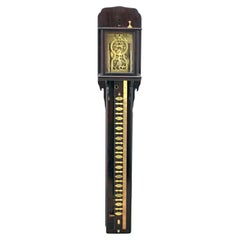Shaku Dokei
Antique Early 19th Century Japanese Edo Antiquities
Brass
Antique Late 19th Century Japanese Meiji Wall Clocks
Brass
Mid-20th Century Japanese Wall Clocks
Brass
Antique Early 19th Century Japanese Edo Wall Clocks
Hardwood
Recent Sales
Antique 19th Century Asian Edo Wall Clocks
Wood
People Also Browsed
Antique 19th Century European Neoclassical Revival Carriage Clocks and T...
Metal, Other
Antique 19th Century Wall Clocks
21st Century and Contemporary Swedish Mid-Century Modern Table Lamps
Textile
21st Century and Contemporary Mexican Mid-Century Modern Table Lamps
Wood, Fabric, Linen, Fiberglass
Late 20th Century American Modern Grandfather Clocks and Longcase Clocks
Wood
20th Century North American Modern Grandfather Clocks and Longcase Clocks
Chrome
Antique Mid-19th Century French French Provincial Wall Clocks
Brass
Antique 1830s European Wall Clocks
Brass
Vintage 1980s American American Craftsman Wall-mounted Sculptures
Brass
20th Century French Art Nouveau Panelling
Ceramic, Wood, Walnut
Antique 1840s Austrian Biedermeier Wall Clocks
Fruitwood
Antique 17th Century British Baroque Wall Clocks
Brass
Antique Late 18th Century French Louis XVI Mantel Clocks
Marble, Ormolu
Vintage 1930s Japanese Arms, Armor and Weapons
Fabric, Glass
Finding the Right Wall-clocks for You
Antique, new and vintage wall clocks have become available over the years in a diverse range of materials, such as wood, metal and glass, as well as styles from mid-century modern to Industrial.
Wall clocks have been designed by acclaimed creators and manufacturers such as Howard Miller Clock Company, Junghans Uhren GmbH, Pragotron and more. The Ball clock and Sunflower clock, which were created by designer Irving Harper in George Nelson’s studio during the mid-century era, are known to design enthusiasts and have become highly collectible over the years.
Whether you want an antique timepiece or one that will match a modern motif, you are sure to find one to suit any home or office decor.
The wall clocks of today have come a long way from the mechanical timepieces that originated in the 14th century. One of the most famous clocks from this era was made by Italian astronomer and physician Giovanni de’ Dondi and took approximately 16 years to complete. By the 17th century, wall clocks were popular luxury objects for the home.
Wall clock choices are not limited to just something that keeps time. A 19th-century bronze cartel clock and barometer set is an elegant addition to a foyer, while a vintage world-map clock allows you to see the time in several locations at once. Cleverly designed clocks have been created for all manner of tastes over the years.
On 1stDibs, you will find wall clocks and other types of antique and vintage clocks from various time periods, from Louis XV to Art Deco, and from all over the world, including Germany, France, the United Kingdom and elsewhere. Bring a touch of class and personality into your living room or dining room with a unique timepiece.
Read More
Kazuyo Sejima’s Flowering Tree Blooms Year-Round
The brilliantly simple design turns a modest bouquet into a major statement.
He Wrote ‘Oedipus Rex,’ but Do You Know What He Looked Like?
The Greek tragedian is said to have been handsome in his day.
Cigar Culture Was Once the Peak of Masculinity. Now, It’s a Compelling Curiosity
Even for those who don’t indulge, elegant smoking accessories and audacious art portraying cigar enthusiasts hold a nostalgic allure.
African Travel Plans on Hold? This Ardmore Leopard Vase Brings the Beauty of the Savanna to You
It’s an excellent example of the sought-after ceramics coming out of South Africa’s KwaZulu-Natal province.
With a High-Tech Flagship and Cool Collabs, Lladró Is Breaking the Mold for Porcelain Production
Thanks to its new leadership, the Spanish maker of figurines, busts and lighting is on a mission to update the art of porcelain for the 21st century.
Zoë Powell’s Magnolia 05 Vessel Is Handmade from Clay She Unearthed Herself
The free-form stoneware piece is inspired by the magnolia tree and its associations with home.
8 Ways to Breathe New Life into a Space with Plants
The pair behind the Instagram account @houseplantclub share their tips for making any room of the house gloriously green.
Paris Gallerist Sandy Toupenet Gets Fired Up over 20th-Century Ceramics and Inventive New Makers
Her space on the city’s Left Bank mixes mid-century pieces by the likes of Jean Cocteau and Pablo Picasso with whimsical contemporary creations.




